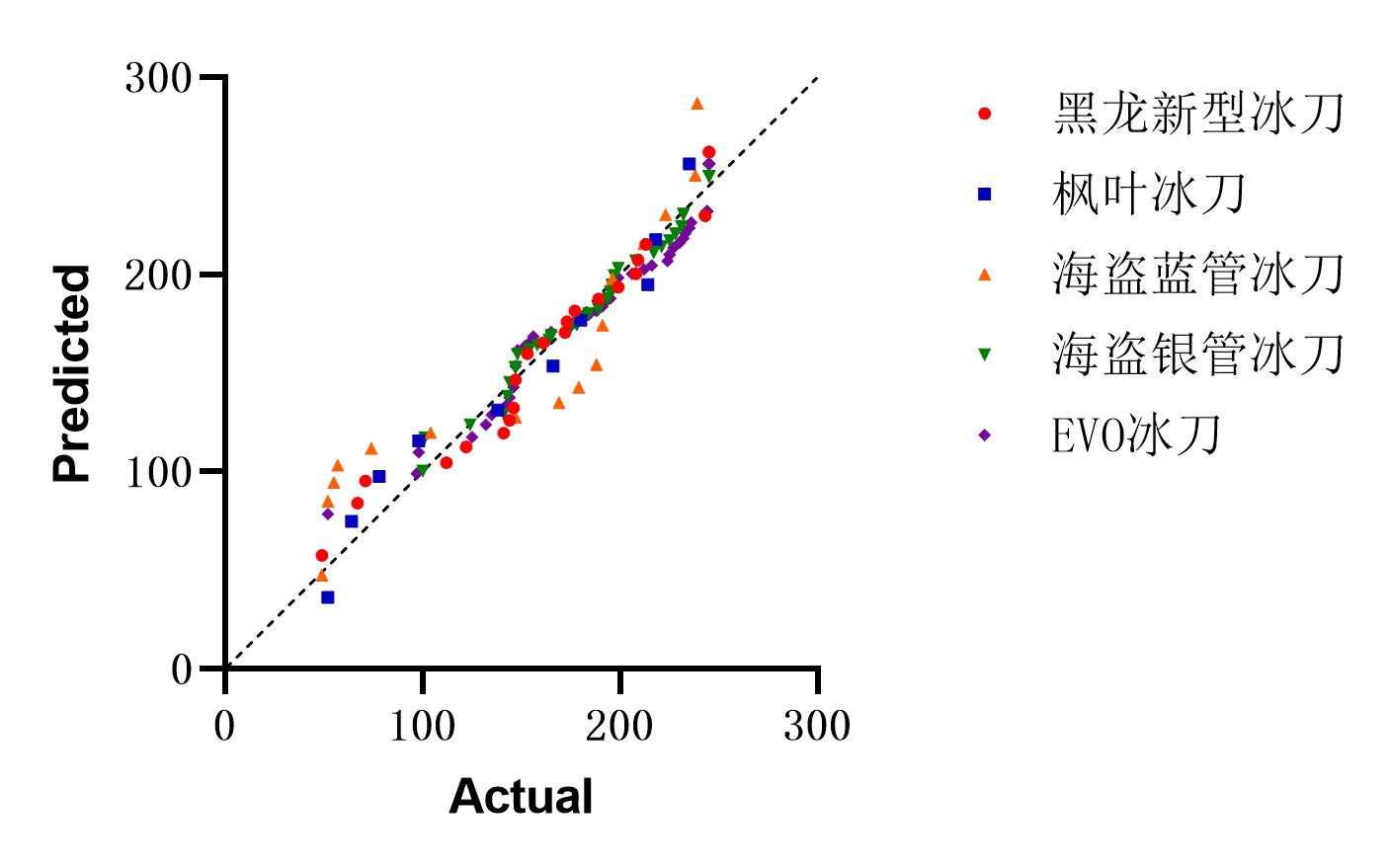Using the form of "questionnaire star", a survey was conducted on the subjective sensory evaluation of five types of speed skating skates among 165 speed skating athletes. All subjects received professional speed skating training for more than one natural year, and engaged in specialized events involving 500m, 1000m, 1500m, 3000m, 5000m, 10000m, and all-round events. The questionnaire was completed for two months before and after. After collecting and sorting out the data, two independent researchers conducted a statistical analysis on the subjective sensory evaluation of 16 dimensions of the Black Dragon T-shaped titanium alloy skate (n=27), Maple Leaf Double Aurora skate (n=7), Pirate Sapphire skate (n=21), Pirate Silver Warrior skate (n=44), and EVO Hollow White Tube skate (n=23). Single factor analysis of variance and multiple comparisons were used, with the D'Agostino&Pearson test for normality and the Brown Forsythe test for homogeneity of variance used. Due to the questionnaire data, it is mainly based on the results of homogeneity of variances. Univariate analysis of variance is used for homogeneity, Kruskal Wallis nonparametric test is used for uneven variances, and LSD method is used for post hoc multiple comparisons. The definition of significance level is p<0.05.






















